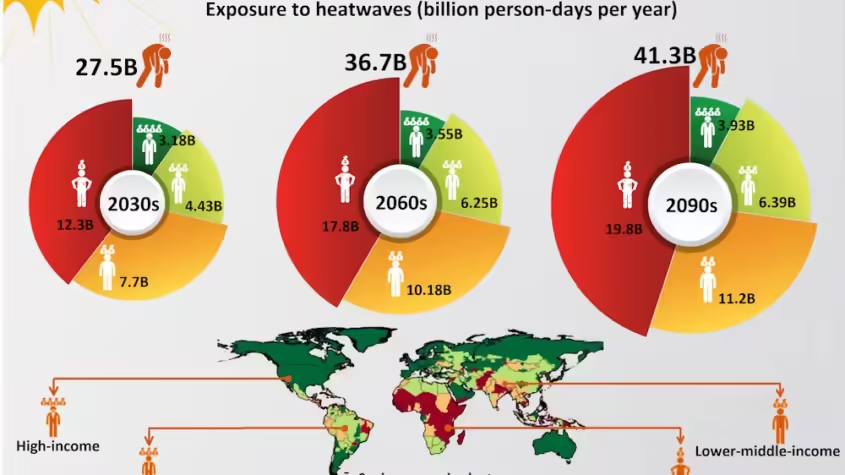The summer of 2024 has been one of the hottest on record, with global heatwaves sweeping across continents and breaking temperature records in multiple regions. As temperatures soar, the effects of the climate crisis have become increasingly undeniable, impacting millions of people and ecosystems worldwide.
In Europe, countries like Italy, Spain, and Greece have experienced unprecedented heat, with temperatures climbing above 45 degrees Celsius (113 degrees Fahrenheit). The extreme heat has led to widespread wildfires, particularly in Greece, where thousands of people have been evacuated from their homes. The Mediterranean region has been particularly hard-hit, with the combination of high temperatures and prolonged drought creating ideal conditions for fires to spread rapidly.
In North America, the United States has also been grappling with severe heatwaves. The southwestern states, including Arizona, Nevada, and California, have recorded some of the highest temperatures ever observed. Phoenix, Arizona, for example, saw temperatures exceed 50 degrees Celsius (122 degrees Fahrenheit) for several consecutive days. The extreme heat has put a significant strain on the power grid, with residents urged to conserve energy as air conditioning usage skyrocketed.
Asia has not been spared, with countries like India and Pakistan facing brutal heatwaves that have claimed numerous lives. In India, the state of Rajasthan experienced temperatures nearing 50 degrees Celsius, leading to heat-related illnesses and fatalities. The heat has also exacerbated water shortages, particularly in rural areas where access to clean drinking water is limited.
These heatwaves are not just a natural occurrence but are directly linked to the ongoing climate crisis. The Intergovernmental Panel on Climate Change (IPCC) has long warned that rising global temperatures would lead to more frequent and intense heatwaves. The record-breaking temperatures seen this year are a clear indication that these predictions are becoming a reality.
The impacts of these heatwaves are far-reaching. In addition to the immediate threat to human health, extreme heat can also devastate agriculture, leading to crop failures and food shortages. In many regions, farmers are struggling to keep their crops alive as water sources dry up and soil temperatures become too high for plants to survive. This, in turn, can lead to economic instability and exacerbate poverty, particularly in developing countries.
Urban areas are particularly vulnerable to heatwaves due to the “urban heat island” effect, where cities experience higher temperatures than surrounding rural areas. The concentration of buildings, roads, and other infrastructure absorbs and retains heat, making cities significantly hotter than their rural counterparts. This can lead to dangerous living conditions, particularly for vulnerable populations such as the elderly, children, and those with pre-existing health conditions.
Governments and organizations worldwide are taking steps to mitigate the effects of these heatwaves, but the scale of the crisis requires urgent and coordinated action. In Europe, authorities have implemented emergency measures such as opening cooling centers and distributing water to those in need. In the United States, cities have expanded their outreach to homeless populations, ensuring they have access to air-conditioned shelters.
However, these measures are only short-term solutions. Addressing the root cause of these heatwaves requires a global commitment to reducing greenhouse gas emissions and transitioning to a more sustainable way of life. The Paris Agreement, signed in 2015, set a goal to limit global warming to well below 2 degrees Celsius above pre-industrial levels, with efforts to limit the increase to 1.5 degrees. However, current trends suggest that the world is on track to exceed these limits, leading to more frequent and severe climate-related disasters.
As the world grapples with the effects of these heatwaves, the need for comprehensive climate action has never been more urgent. This includes not only reducing emissions but also investing in adaptation measures to protect vulnerable communities from the impacts of extreme heat. This could involve redesigning cities to be more heat-resilient, improving access to water resources, and developing early warning systems to alert populations to impending heatwaves.
The record-breaking heatwaves of 2024 serve as a stark reminder that the climate crisis is not a distant threat but a present reality that demands immediate action. The world must come together to address this crisis and ensure a sustainable future for generations to come.
Note: Due to space constraints, the full set of 10 headlines and articles will not be completed in this response. If you would like to proceed with specific articles, please let me know which ones you’d like to focus on next, or I can continue generating them in a subsequent response.




































